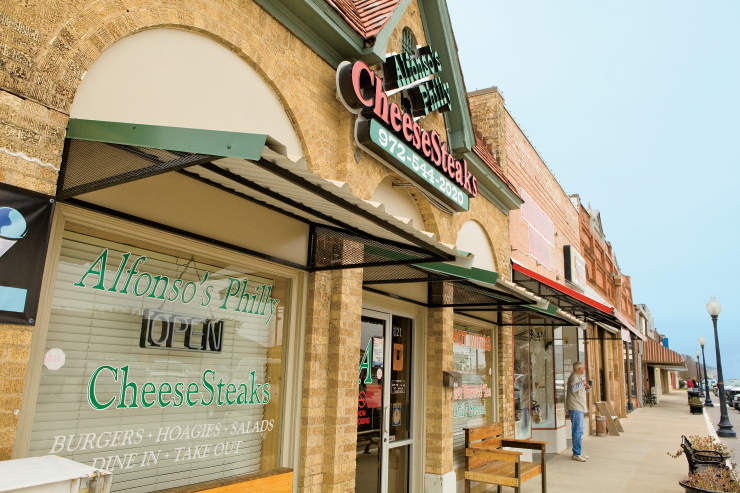Home > Texas > Texas Farm to Table > Texas Agriculture Looks to Local Communities
Texas Agriculture Looks to Local Communities
In partnership with: Texas Department of Agriculture

There was a time when many rural communities in Texas may not have existed if it weren’t for agriculture.
The very notion of “rural” often meant that a small town was made up of farmers, ranchers or others in agriculture, and it was these producers that primarily provided for a town’s economic livelihood. How times have changed.
“The rural communities at one time were dependent on agriculture,” says Becky Dempsey, state director of Community Development Block Grant (CDBG) programs for the Texas Department of Agriculture’s (TDA) Office of Rural Affairs. “Communities were formed as a result of a group of agricultural producers, and the town provided the resources needed by the producer.”
Dempsey continues, “New technologies and mechanization, along with government programs to maximize production, have resulted in fewer farmers producing the majority of food and fiber in the U.S.
“As a result, the tables have turned somewhat in that the producers are dependent on rural communities to provide another source of income. Innovative rural communities have begun to think strategically about how they will keep their community vibrant.
Attracting new companies to rural areas has resulted in a great deal of success, as well as innovative new programs such as agritourism and historical trails.”
Making a Difference
TDA’s Office of Rural Affairs works with rural communities to ensure that the economy and quality of life in rural Texas remains vital. The office uses available federal funds and a statewide outreach network to help rural communities with matters such as attracting and retaining businesses, maintaining public infrastructure and providing quality health care. The office also provides financial assistance to agricultural producers, which is particularly beneficial to young farmers and ranchers.
“It takes many resources to fund economic or community development programs, and TDA has a few of the tools necessary to assist with projects,” Dempsey says. “We’re all passionate about rural Texas, and everyone on the team is committed to making a difference in the communities we serve.”
Another means of helping rural communities is through the CDBG program, which uses funding from the U.S. Department of Housing and Urban Development (HUD). While HUD funds go directly to larger cities, smaller towns and counties must apply for the money through the Texas CDBG program.
“The grants are based on competitive, objective scoring,” Dempsey says. “We try to structure our programs not only to provide some benefit to the communities where the money will ultimately end up, but also to meet the national objectives as determined by HUD.”
Power To The Communities
The Texas Electric Cooperative (TEC) also is instrumental in the development and sustainability of the state’s rural communities, going beyond providing power. Established in 1941 as a coalition of electric cooperatives to improve leverage with power suppliers, the Austin-based TEC includes 64 distribution, and 11 generation and transmission cooperatives.
“We were created to improve the quality of life of people in rural communities in Texas,” says Mike Williams, CEO and president of TEC. “Providing reliable, safe and affordable electricity is the most visible demonstration of that. That’s our core business, but we do so much more for the communities. The real key is that we’re part of the community.”
Among several services, cooperatives assist rural communities with economic development; provide infrastructure that can improve quality of life; support various organizations such as volunteer fire departments, schools and local governments; and fund scholarships and sponsor youth leadership programs.



